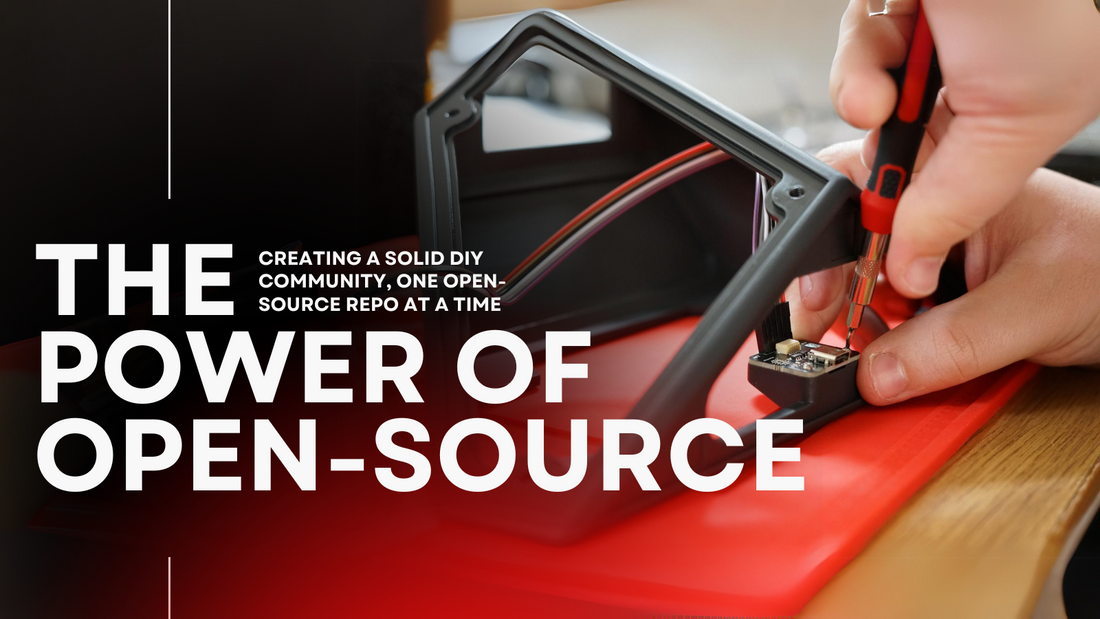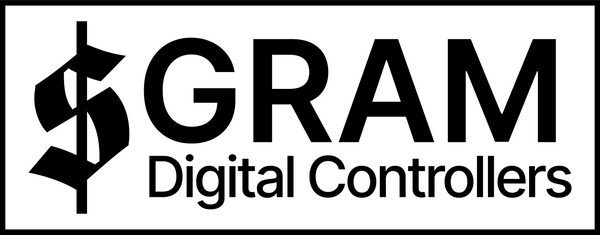
The Power of Open-Source: Why do we share our production files?
Howdy folks! Grammy here for another blog! I know I don’t usually write these, but I wrestled the keyboard from BRUISES because I want to discuss something I’m passionate about: Open Source licensing.
As we’ve scaled our company, we’ve needed to talk to lawyers, accountants, banks, and more. When we describe GRAM to these types, we always get the same question: “How do you make money if everything is open source?”

Why is GRAM an Open Source Hardware company?
When we started GRAM over a year ago, we had no idea what we were doing. I honestly just wanted a controller, and I didn’t want to wait on a pre-order to get one. I found the Crane’s Lab discord, and everyone pointed me to the Open Frame1 (OF1), a PCB designed by Greg Turbo to mimic the Frame1 controller PCB, and OFOF1, a controller case by Rana Labs designed to fit the OF1. All of this ran on Haystack's firmware. I loved the idea of making my own controller, but I wanted to change it. I took what was started by one person, modified it, and was able to design something perfect for me.
When the idea came up to design our own controllers and sell them, we had to make a decision around the licensing of the tech. GRAM could’ve gone down the standard hardware route: closed source, fiercely guarding our designs and processes. This seems like a frankly exhausting use of resources, and it completely shuts out the people like me who wanted to build something completely custom. It also feels disingenuous to use the skills I learned working within open source spaces like Crane’s Lab to create something so closed off and protected. So we made the decision to open source EVERYTHING.
All firmware modifications, new product updates, and device platforms are hosted under the GPL-3 license on GitHub. Every little detail can be utilized by others to design, build, and even sell their own GRAM controllers. We’ve seen people use this to great success; Rectangle Corner’s first major drop used the GRAM OF1 case designed in early 2023. We have people using our PRI$M platform to build ergonomic leverless FGC controllers. We even have an entire channel in our discord filled with people asking how to print their own frames, panels, and buttons at home.

Importantly, open sourcing our controllers allows us to maintain a crucial part of the business for our passion and purpose: design! Both BRUISES and I are designers at heart, and we only release controller designs we truly love. Custom art is something we’ve considered introducing in the future, but each design we release now is carefully designed to match our tastes, and we don’t want to give up that freedom just yet. We get dozens of DMs a week asking about custom art/custom panels for our controllers. It feels amazing to say “you can make it yourself!” rather than to shut it down and say “ask us next year”.
We make these devices on several platforms and in collaboration with other who share the vision; the nanoGRAM with Beta Buttons, the GRAM Slim with Quark, the PRI$M with Wunwae, and the GRAM Firmware with Haystack and Skywalker. All of this collaboration is only possible because of the unique open source business model that makes GRAM tick.
So this begs the question…
How do we make money?
GRAM makes a majority of its revenue through the way you may expect: selling controllers. We’ve built over one thousand smash controllers in our shop in Dallas, all made, tested, and shipped by hand. Most people don’t want to build their own controller when there’s something priced reasonably in stock that’s been tested and warrantied by a professional, especially when they’re given industry-leading support.

Being open source has its perks as well! Our scale has allowed us to purchase high-quality components that are specific to our platform, and these are available on our website for those that want the convenience of purchasing parts for a build rather than building the whole thing by hand. We sell pre-soldered PCBs for those starting out that don’t feel comfortable soldering their own controller. We also sell injection-molded buttons for those that want long-lasting PBT rather than brittle resin. These enable even more people to give building their own custom controller a try!
So how can I support the project?
Activity on the GitHub is always appreciated, whether it’s a star, a pull request, or your own modified fork. You can also consider purchasing items you may not want to fully DIY (like PCBs, cables, and buttons) from our DIY section on our website! Finally, just spreading the word about GRAM is the most impactful way you can help out!
GRAM Digital Controllers
